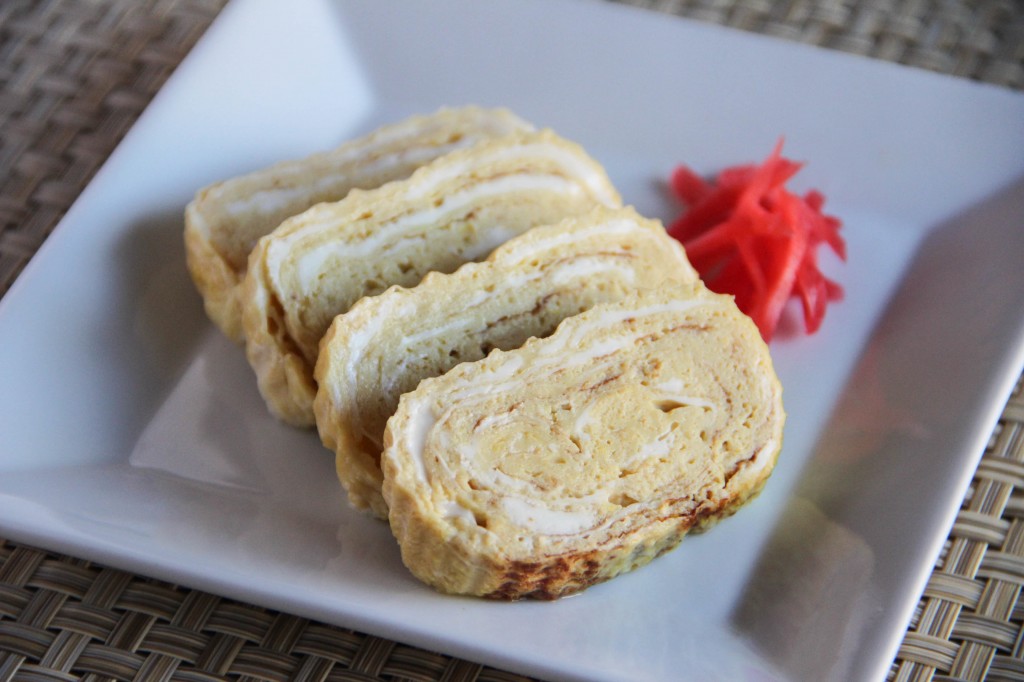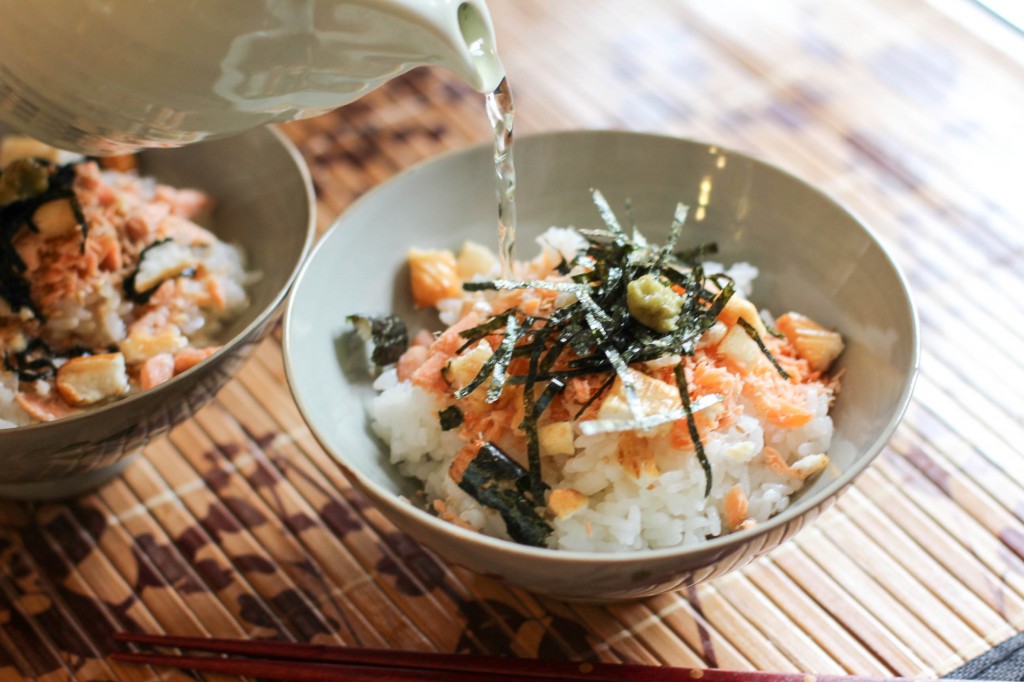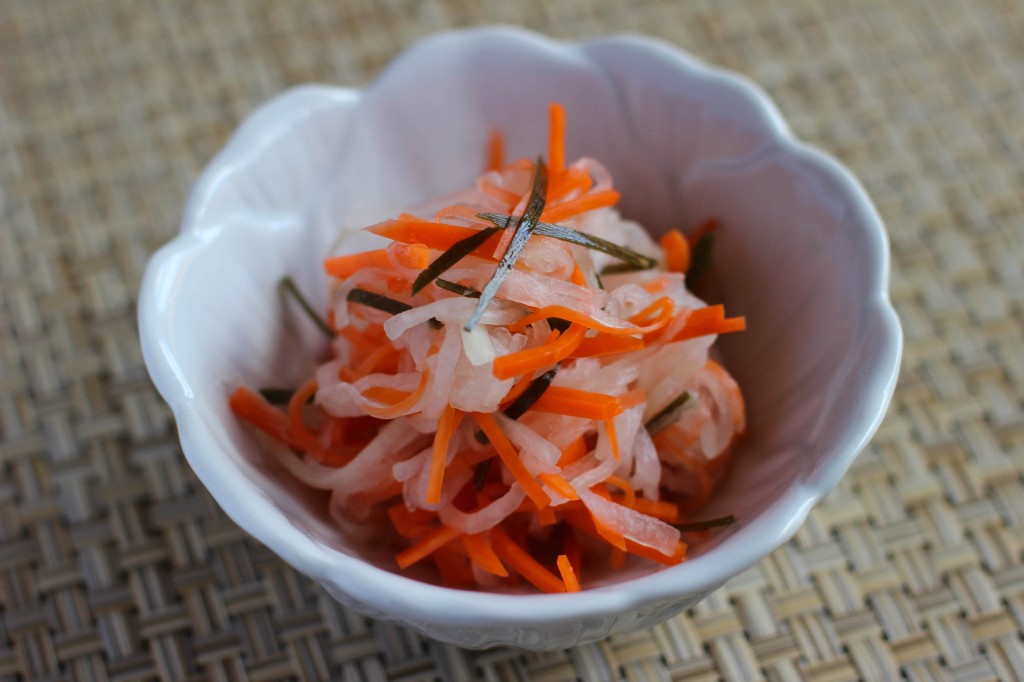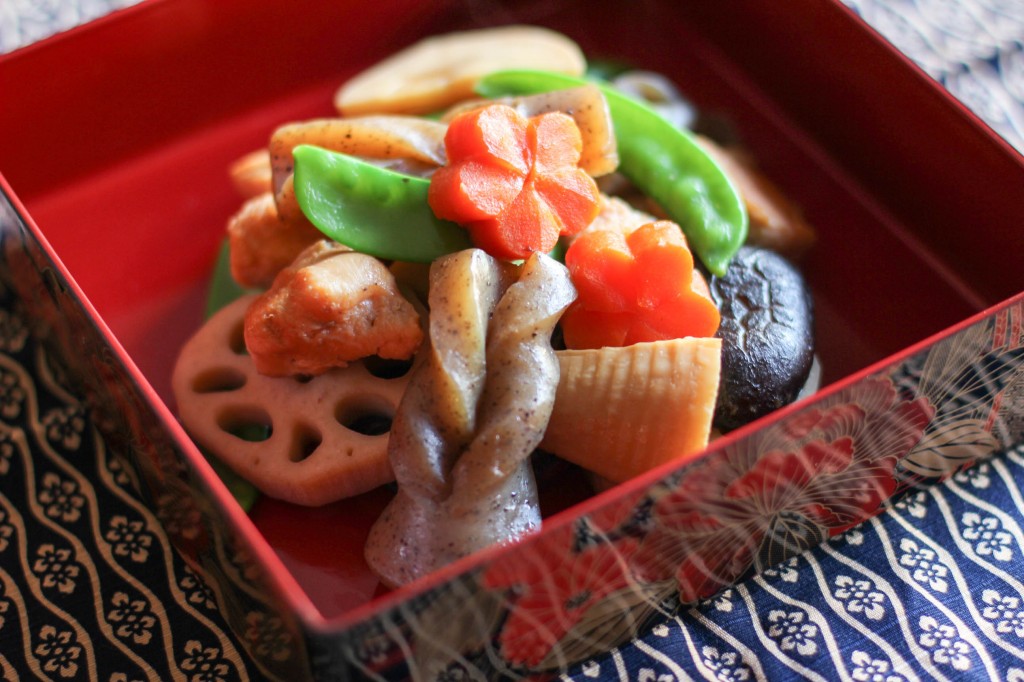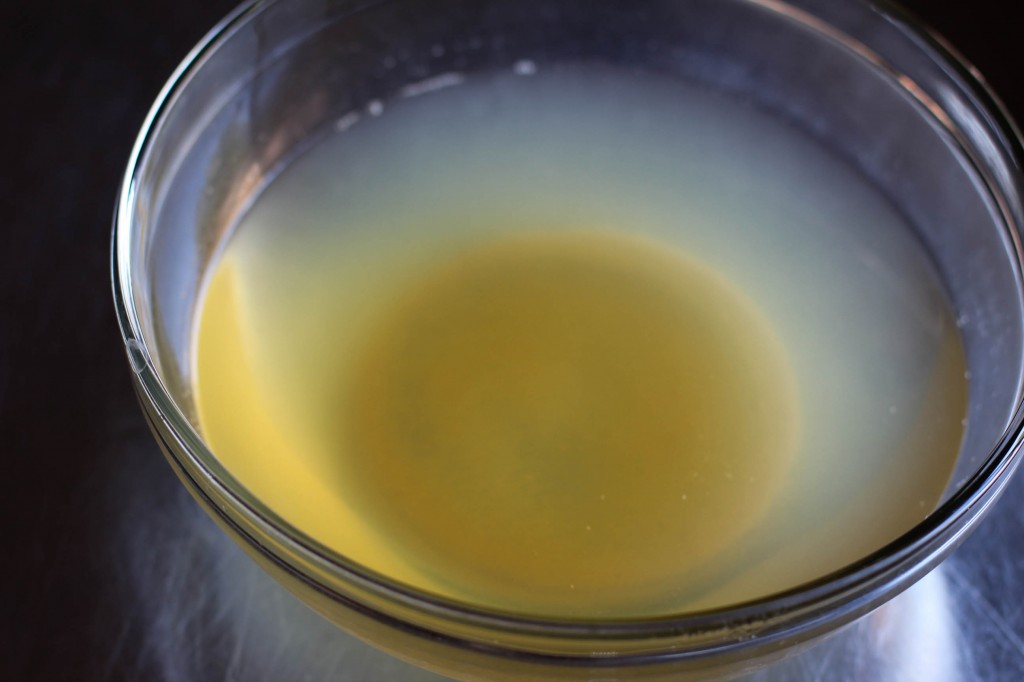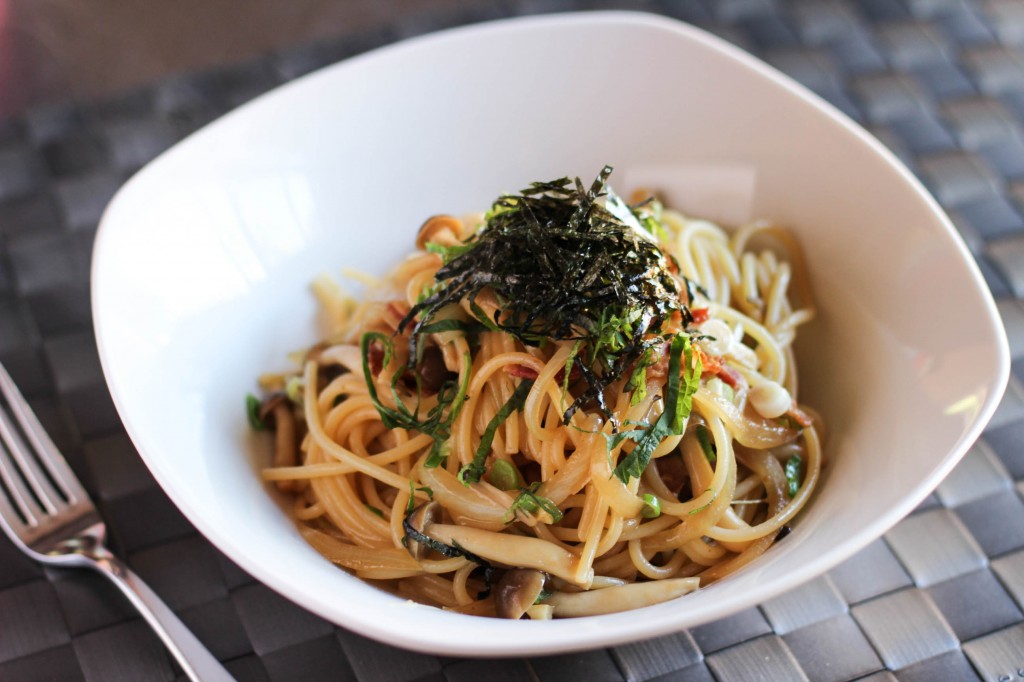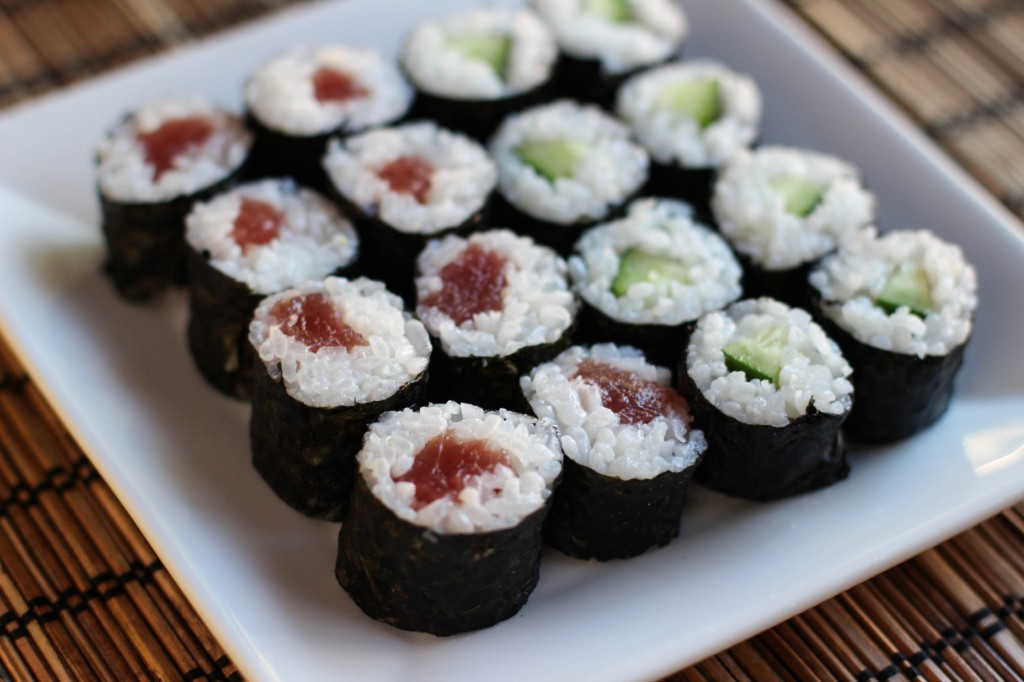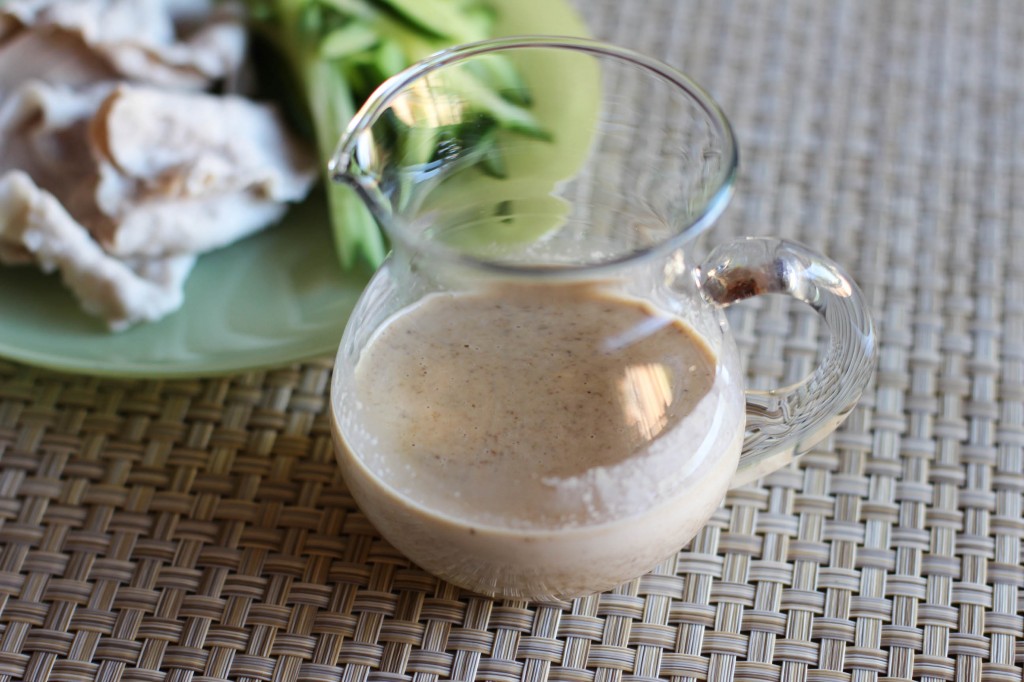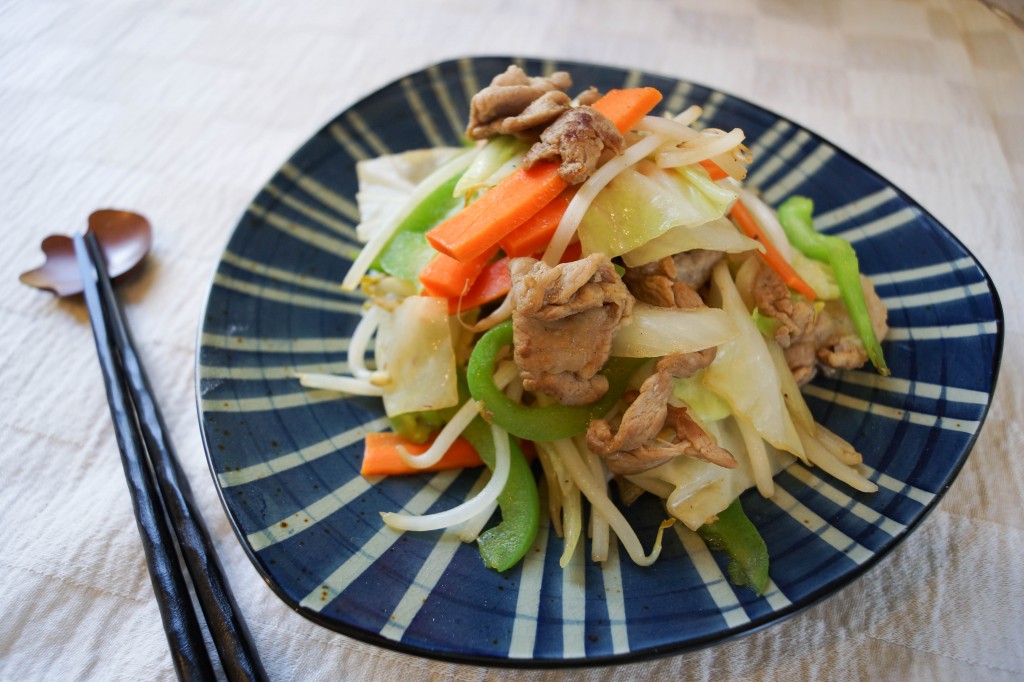Dashimaki Tamago is rolled pan fried eggs just like Tamagoyaki (rolled omelette). The cooking and rolling technique to make Dashimaki is exactly the same as Tamagoyaki, but the ingredients and flavor are a little different. Like Tamagoyaki, it is another staple dish for breakfast and Bento lunch boxes
Ochazuke is usually rice in green tea with some salty toppings or pickled vegetables. It is very simple food that involves hardly any cooking. Ochazuke is a “you make it at the table” kind of thing, so you probably won’t find it on the menu at restaurants, especially outside Japan.
Namasu is a kind of Sunomono that is often a part of Osechi Ryouri (Japanese New Year cuisine). There are a lot of kinds of Namasu, but here we made the most typical one: red and white Namasu. The red is carrot and the white is Daikon radish, both pickled in sweet vinegar. There are meanings to each dish in Osechi Ryouri, mostly for happiness and good health for a whole year. Red and white are the colors of celebration in Japan, so it is the perfect color combination to celebrate a new year.
Chikuzenni (筑前煮) is a mix of vegetables such as Renkon (lotus root) and carrots, Konnyaku and chicken boiled in strongly flavored broth with soy sauce and sugar. The dish is originally from the southern part of Japan, in the Fukuoka region of Kyushu island, however, it has spread all over Japan.
Ichiban Dashi (一番だし) is a Dashi broth using a combination of Kombu (Dried Kelp) and Katsuo (Dried Bonito Flakes). You can use either one of these ingredients to make Dashi; however, Ichiban Dashi uses both and that gives a much richer and more complex flavor to the broth.
There are a lot of Italian restaurants in Japan, and you can find any kinds of Italian pasta there. There are also many “pasta restaurants” that are different from Italian restaurants. There they serve typical Italian pasta dishes such as tomato sauce and cream sauce pasta, but also more Japanese flavored and their own kinds of pasta. Japanese pasta is as popular as authentic Italian counter part.
Salmon flakes are pan-fried, moisture-reduced salmon that make a great topping for steamed rice. Strongly seasoned with salt, they resemble furikake rice seasoning and are not only perfect for rice but also for various dishes like pasta and salad. While not meant to be served as an entrée, salmon flakes are a convenient and versatile dish to prepare in advance and keep on hand.
Sushi Rolls or Hosomaki are a very basic but popular sushi in Japan. Hoso means thin and maki means roll. We want to say “thin” because there are also thick rolls, Futomaki. While Futomaki has a lot of fillings such as cooked vegetables and sweet fish flakes, Hosomaki rolls only have one skinny filling inside. Because of the simplicity of ingredients and cooking technique, Hosomaki is suitable for home cooking as well as restaurant food.
Sesame Dressing is a mayo based dressing with a burst of sesame flavor that is popular for salad in Japan. It has more calories than soy sauce based dressings, but it tastes so good. There are a lot of bottled sesame dressings at Japanese supermarkets, but it is very easy to make at home.
Stir Fry Vegetables, called Yasai Itame in Japanese, is a common home cooking dish. Nobody really use recipes to make Yasai Itame. You just look in the refrigerator and search for what vegetables to use up. Yes, Yasai Itame is left-over vegetable mishmash or hodgepodge food (a lot of the time anyway).
There is a different type of Yasai Itame in Japan, which is served at Chinese restaurants. There are more Chinese seasonings like oyster sauce and other flavorings in it. That is very good too, but it is a bit more elaborate than what we eat everyday. Here we’d like to recreate a very typical home cooking version.
